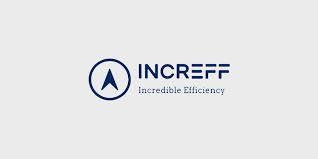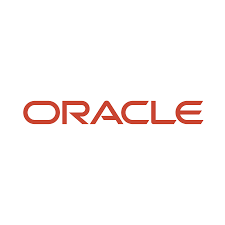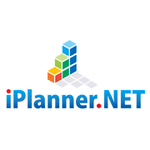What Is Strategic Planning Software?
Strategic planning software is an effective tool for helping firms define and implement long-term goals and objectives. It enables firms to swiftly and effectively develop, assess, and implement strategies. With a constantly changing corporate market, having a solid strategic plan in place is critical for staying ahead of the competition.
This program is intended to simplify and streamline the strategic planning process, making it a must-have for every firm trying to prosper in today's marketplace. One of the most important elements of strategic planning software is its capacity to collect and analyze data from a variety of sources, such as market trends, rivals, and customer insights.
This data is then utilized to identify opportunities and potential hazards, helping firms to make more informed decisions when developing strategic strategies. Using real-time data, firms can remain adaptable and adapt their plans to changing market conditions. In addition to data analysis, strategic planning software provides sophisticated capabilities including scenario planning, target setting, and performance tracking.
These capabilities enable firms to develop several plans and assess their potential consequences before determining the optimal course of action. This reduces the risks associated with strategic planning while increasing the possibilities of success. Another important element of strategic planning software is its capacity to promote collaboration and communication inside a business.
It enables teams to collaborate effortlessly by providing a single platform for idea sharing, goal setting, and progress tracking. This improves alignment and coordination among team members, ensuring that everyone is working toward the same goals. Investing in strategic planning software not only improves the planning process, but it also saves time and money.
Manual planning approaches require firms to spend a large amount of time collecting and organizing data, resulting in a long and tiresome process. With software, this process is automated, allowing firms to concentrate on more important duties. Overall, strategic planning software is a helpful resource for any company seeking to develop a road map for success. It provides data-driven insights, innovative functionality, and enhanced collaboration to enable efficient and effective strategic planning. Investing in this software allows organizations to remain competitive, adapt to changing market conditions, and achieve long-term success.
What Are The Recent Trends In Strategic Planning Software?
In recent years, strategic planning software has grown in popularity among firms trying to streamline their planning processes, improve decision-making, and achieve long-term goals. As demand for this software grows, the market has seen an increase in new trends and developments.
Let's explore, we'll look at the latest developments in strategic planning software and how they might help your firm.
1. Cloud-Based Solutions: With the development of remote work and the requirement for collaboration, firms are shifting to cloud-based strategic planning software. These technologies enable teams to view and collaborate on their ideas from any location, at any time, making the process more efficient and smooth.
2. Artificial Intelligence (AI) Integration: The usage of AI in strategic planning software is increasing. AI can assist businesses in identifying patterns, anticipating future barriers, and making more informed decisions by analyzing data and using predictive modeling.
3. Real-Time Data Analysis: In today's fast-paced corporate environment, real-time data is essential for effective strategic planning. That is why many software manufacturers are incorporating real-time data processing capabilities into their offerings. This allows firms to monitor their progress and make changes to their strategies in real time.
4. User-Friendly Interfaces: Software developers are increasingly prioritizing user experience (UX), and strategic planning software is no different. Vendors are constantly attempting to create intuitive and user-friendly interfaces that make the planning process more accessible to all team members, regardless of technical ability.
5. Integration With Other Systems: Businesses are increasingly utilizing a wide range of software and solutions to handle various parts of their operations. As a result, the most recent trend in strategic planning software is its capacity to interact with other systems, such as project management or CRM software, thereby streamlining the planning process and improving data integrity.
Benefits Of Using Strategic Planning Software
Strategic planning is a critical step for any business or organization seeking long-term success. It include establishing goals, examining resources and market conditions, and creating a strategy to achieve those goals. However, traditional strategic planning processes can be time-consuming and prone to human error. Here's where strategic planning software comes in. Strategic planning software is a computer-based application that aims to simplify and streamline the strategic planning process. It provides a variety of features and functionality that older techniques do not, making it a significant tool for enterprises of all sizes and industries.
Let's look at the advantages of adopting strategic planning software in depth.
1. Improves Efficiency And Productivity: Strategic planning software automates many of the laborious and time-consuming procedures associated with traditional planning approaches. This allows planners to devote more time to vital tasks like data analysis and decision-making. Furthermore, having a consolidated platform for all planning processes improves team collaboration and communication, enhancing efficiency and production.
2. Provides Accurate Data Analysis: Strategic planning software uses modern algorithms and data analytics tools to process massive volumes of data fast and precisely. This gives planners a complete picture of their organization's strengths, weaknesses, opportunities, and dangers. Planners can make informed decisions and establish effective plans when they have access to this data.
3. Encourages Cooperation And Transparency: One of the most significant benefits of employing strategic planning software is the ability to foster cooperation and transparency. A cloud-based platform allows all team members to access the same data and collaborate in real time, regardless of their physical location. This stimulates collaboration and transparency, resulting in more effective and inclusive planning processes.
4. Facilitates Scenario Planning: Strategic planning software enables planners to simulate and analyze various scenarios, assisting them in identifying potential dangers and possibilities for the future. This enables firms to plan and prepare for a variety of scenarios, allowing them to make proactive decisions and remain competitive.
5. Cost-Effective: While using strategic planning software may appear to be a big expenditure at first, it can save firms both time and money over time. Organizations may minimize their planning cycle time and make better informed decisions, resulting in enhanced cost savings and revenue growth.
Important Factors To Consider While Purchasing Strategic Planning Software?
When it comes to choosing strategic planning software, there are numerous key elements to consider in order to make the best option for your company. These variables include the software's features and functionality, the pricing, as well as its usability and compatibility with existing systems.
1. Features And Functionality: When looking for strategic planning software, you should first consider your organization's specific objectives and goals. This will assist you in determining which features and functionalities are necessary for your team. Some important elements to consider are the capacity to build and manage strategic plans, track progress and performance, and generate reports and visualizations. Furthermore, some software may have advanced functions such as scenario planning, risk management, and budgeting capabilities. Make sure to prioritize features that are in line with your organization's priorities and ambitions.
2. Cost: The cost of strategic planning software varies widely depending on its capabilities, as well as the size and complexity of your firm. While it may be tempting to go with a cheaper alternative, consider the long-term expenses and potential benefits of investing in more powerful software. Look for software that has a clear pricing structure and contains all of the functionality you require in one package, rather than paying for add-ons or upgrades.
3. Usability And Compatibility: It is critical to select software that is user-friendly and intuitive to use, as this will reduce the learning curve for your staff and promote acceptance. Some software may necessitate substantial training or technical expertise, which can be expensive and time-consuming. Also, be sure that the software is compatible with your current systems and can interact easily with your other tools and databases.
4. Customer Support: When acquiring strategic planning software, it is critical to select a company that provides dependable and accessible customer service. This can include training materials, technical support, and a dedicated account manager who can help with any issues or queries that may occur. Look for software providers who have numerous channels of communication, such as phone, email, and live chat, and have a quick response time.
What Are The Key Features To Look For In Strategic Planning Software?
When looking for the best strategic planning software for your organization, there are a few crucial things to consider. These capabilities can not only help you expedite and enhance your strategic planning process, but they also guarantee that you are investing in a dependable and efficient software solution.
Here are the key things to look for in strategic planning software:
1. Customization And Flexibility: A solid strategic planning software should provide flexibility and customization choices to match the specific needs of your company. This includes the ability to develop and change your own planning templates, set your own goals and targets, and incorporate your own data sources. Look for software that allows you to customize the planning process to reflect your company's specific goals and strategy.
2. Collaboration And Communication Tools: Successful strategy planning requires input and ideas from a variety of stakeholders inside your firm. Look for software that provides collaboration and communication features, such as real-time editing, task assignments, and comment threads, to help in collaborative planning. This will not only save you time and increase efficiency, but it will also promote improved communication and team alignment.
3. Data Analysis And Reporting: Data are critical components of strategic planning. Make sure the software you select has robust data analysis and reporting capabilities. This enables you to monitor and analyze key performance indicators (KPIs), detect trends and patterns, and make data-driven choices. Look for software that provides configurable reports and dashboards to help you present your data in a clear and organized manner.
4. Integration And Compatibility: Your strategic planning software should be able to work effortlessly with the other tools and software that your company employs. This may include project management software, CRM systems, and financial software. Look for software that is compatible with the tools you presently use to avoid disruptions or data transfer concerns.
5. Training And Customer Support: Even the best strategic planning software will require some initial training and onboarding for your staff. To ensure a smooth and effective implementation, choose a software provider who provides thorough training materials, webinars, and customer support. This will also assist you in realizing the full potential of the software and maximizing its value for your business.
By taking these key elements into account, you can ensure that the strategic planning software you select is adapted to the needs of your company and will assist you in effectively achieving your objectives. Keep in mind that each organization's needs may differ, so thoroughly research each software choice before selecting the one that best meets your individual needs.
Why Do Businesses Need Strategic Planning Software?
Strategic planning is a critical component of every business' success. It include setting goals, developing strategies, and making decisions to attain long-term objectives. Traditional strategic planning approaches, such as spreadsheets and manual tracking, are time-consuming and error-prone. Here is where strategic planning software comes into play. Businesses use strategic planning software to streamline their planning processes and make educated decisions that promote growth and profitability.
Let's explore, we'll look in depth at the benefits and features of strategic planning software, as well as how it may transform your company's strategic planning.
1. Centralized Planning And Collaboration: One of the primary benefits of strategic planning software is its ability to centralize all planning processes, including data, reports, and analysis. This eliminates the need for various documents and spreadsheets, ensuring that all stakeholders get the most current information. Furthermore, real-time collaboration tools enable team members to collaborate effortlessly regardless of their location.
2. Data-Driven Decision-Making: Strategic planning software helps firms make data-driven decisions by delivering extensive insights and analyses. Businesses can use advanced reporting and forecasting capabilities to detect trends, patterns, and opportunities, allowing them to make educated decisions that propel growth. This not only enhances the accuracy of strategic judgments, but also reduces risk.
3. Improved Efficiency And Productivity. Manual planning techniques are time-consuming and prone to errors, which can impede a company's success. Businesses can save time and resources by automating strategic planning processes such as data collecting, analysis, and reporting. This allows staff to focus on more strategic duties, increasing overall productivity.
4. Alignment Of Goals And Strategies. Strategic planning software assists businesses in aligning their goals and strategies by determining where resources and efforts should be allocated. This guarantees that all departments and team members are working toward the same goal, avoiding inconsistencies and boosting improved teamwork.
5. Adapting To Changed Environments In today's fast-paced corporate environment, adaptability and flexibility are vital. Strategic planning software enables firms to respond rapidly to changing market conditions and unexpected problems. Businesses can use real-time data and scenario planning skills to make strategic modifications to guarantee they stay on track to meet their objectives.
How Much Time Is Required To Implement Strategic Planning Software?
The installation time for strategic planning software varies depending on a number of factors, including your organization's size and complexity, the level of customization required, and the availability of resources. On average, it can take between a few weeks and several months to properly adopt and integrate strategic planning software into your business processes.
It is critical to note that the installation process for strategic planning software should not be rushed because it necessitates thorough preparation and attention to ensure its efficacy. This includes gathering and organizing all essential data and information, establishing clear objectives and targets, and teaching staff how to utilize the software efficiently.
The first stage in using strategic planning software is to set it up, which often includes installing and customizing the system to meet your organization's requirements. This could take anything from a few weeks to a month, depending on the level of intricacy and customisation required. Once the software is installed, the next stage is data migration, which entails moving all existing data from multiple sources to the software.
This can be a time-consuming operation, particularly for larger firms with a huge volume of data. On average, data migration takes two to three months. After migrating the data, the next step is testing and training. This includes running test runs of the program and teaching personnel on how to utilize it properly. This step is critical because it ensures that the software works properly and that staff understand how to use its capabilities to achieve their goals.
Overall, using strategic planning software necessitates a substantial investment of time and resources. However, the benefits of streamlining and strengthening your organization's strategic planning processes will far surpass the initial time and effort required for implementation.
What Is The Level Of Customization Available In Strategic Planning Software?
When it comes to strategic planning software, customization options are critical for fulfilling an organization's specific demands and objectives. So, what level of customisation is available in strategic planning software? Strategic planning software can include a wide range of customization options, depending on the product and vendor.
In general, most strategic planning software allows for extensive customization to assist organizations in developing a one-of-a-kind and bespoke strategy. One of the most important customization options in strategic planning software is the ability to change the plan's structure to reflect the organization's specific goals and objectives. To build a more personalized document, you can change the plan's framework or layout, as well as add or remove components.
Another important customization feature of strategic planning software is the ability to enter and evaluate custom data. This enables firms to develop a more accurate and relevant strategy plan by using their own unique metrics, KPIs, and data points. Furthermore, many strategic planning software solutions include customized templates, frameworks, and tools that customers can use to create their strategic plan.
This enables organizations to select the aspects and features that best meet their needs and preferences, making the process more efficient and productive. It's important to note that, while most strategic planning software allows for extensive customization, not all vendors offer the same capabilities and options. As a result, it is critical to do research and comparisons of various software solutions to determine which one best meets the demands of your firm.
Overall, strategic planning software offers tremendous customisation, allowing firms to construct a truly unique and bespoke strategy plan that corresponds with their aims and objectives. Organizations can use the correct tools to optimize their strategic planning process and achieve better business results.
Which Industries Can Benefit The Most From Strategic Planning Software?
Businesses across all industries can benefit from using the proper strategic planning tools. However, other businesses may have a larger benefit and efficiency by implementing strategic planning software into their operations. One such industry is the healthcare sector. With ever-changing rules and a high degree of competition, healthcare businesses must have a robust strategic plan in place to manage obstacles and achieve their objectives.
Healthcare providers can use strategic planning software to expedite decision-making processes, evaluate data, and measure progress toward attaining their goals. This can lead to better patient outcomes, cost savings, and overall organizational performance. The financial business can also profit significantly from strategic planning tools. Financial institutions must consistently generate lucrative returns while controlling risks and complying with rules.
These firms can use strategic planning software to establish and implement strategic plans that are aligned with their financial objectives, as well as prioritize efforts to promote growth and reduce risks. Strategic planning software can also aid technology-related organizations significantly. To remain competitive in today's rapidly changing technological landscape, businesses must adapt quickly.
These firms can use strategic planning software to examine industry trends, anticipate future developments, and make informed decisions that will fuel innovation and long-term growth. Furthermore, industrial organizations can use strategic planning software to improve operational efficiency, manage supply networks, and plan for future expansion. This is critical for the success of these organizations, as they are continually confronted with obstacles such as demand swings, supply chain disruptions, and changing market conditions.
Conclusion
Finally, obtaining the correct strategic planning software for your firm is critical to its success and growth. Given the abundance of options on the market, it is critical to thoroughly assess your requirements and evaluate the features and functionality of each software before making a decision. Before making a purchase, it is recommended that you take advantage of free trials and demonstrations to gain hands-on experience and assess whether the product fulfills your needs.
In addition, soliciting input from other users and reading reviews can provide useful insights and help limit down the possibilities. When choosing a strategic planning software, affordability, customer service, and scalability are all key considerations. Keeping your budget and long-term goals in mind will help you make sound investments that will benefit your business in the long run.
Remember that selecting the appropriate strategic planning software is not a one-size-fits-all answer. What works for one firm may not be suitable for another. Take the time to thoroughly investigate and compare several choices before making a selection. With the proper software in place, your company can effectively and efficiently plan, implement, and track plans, resulting in better decision-making and greater success. We hope that this buyer's guide has provided you with useful and enlightening insights to assist you make an informed selection and further your strategic planning efforts.






















